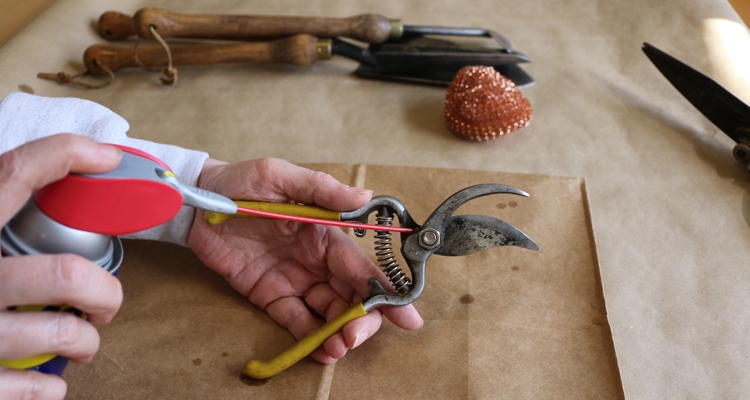Tools maintenance is not just about prolonging their lifespan; it’s also crucial for ensuring they perform reliably and safely on the job site.
Here are some practical tips to keep your construction tools in top condition:
1. Clean Thoroughly After Each Use
Construction tools often accumulate dirt, dust, and debris during use. Clean them meticulously after each job to prevent buildup that can affect performance and longevity. Use a brush and a clean cloth to remove grime from surfaces and moving parts.
2. Inspect for Wear and Damage
Before and after use, inspect tools for signs of wear, cracks, or other damage. Pay close attention to handles, cords, blades, and moving parts. Address any issues promptly to prevent safety hazards and costly repairs down the line.
3. Lubricate Moving Parts Regularly
Keep tools operating smoothly by lubricating hinges, gears, and moving parts regularly. Use lubricants recommended by the manufacturer to prevent rust and ensure optimal performance.
4. Store Properly
Proper storage is essential for maintaining tool quality. Store tools in a dry, climate-controlled environment to prevent rust and corrosion. Use toolboxes, racks, or designated storage areas to keep them organized and protected from damage.
5. Sharpen Blades and Bits
Tools with cutting edges, such as saw blades, drill bits, and chisels, should be sharpened regularly. Sharp tools not only work more efficiently but also reduce the risk of accidents caused by dull blades.
6. Replace Worn-Out Parts
Replace worn-out or damaged parts promptly with genuine replacement parts from the manufacturer. Using proper parts ensures compatibility and maintains tool performance and safety.
7. Follow Manufacturer Guidelines
Refer to the manufacturer’s maintenance guidelines for specific care instructions. These guidelines often include recommended cleaning methods, lubrication schedules, and storage tips tailored to each tool type.
8. Handle Tools with Care
Avoid dropping or mishandling tools, as this can lead to damage or misalignment. Always use tools for their intended purpose and follow proper safety protocols to prevent accidents.
9. Maintain Battery-Powered Tools
For cordless tools, monitor battery life and recharge or replace batteries as needed. Store batteries in a cool, dry place and follow manufacturer recommendations for battery care.
10. Schedule Regular Maintenance
Create a tool maintenance schedule based on the frequency of tool use and the manufacturer’s recommendations. Regular maintenance helps detect issues early and keeps tools in peak condition for longer.
By implementing these tool maintenance practices, construction professionals can ensure their tools remain reliable, efficient, and safe for every project. Investing time in proper maintenance not only extends tool lifespan but also enhances productivity and safety on the job site.
Your tools are your assets—maintain them well to maximize their performance and longevity.
Also Read
Step-by-step guide to house renovation
20 essential hand tools every builder should have

